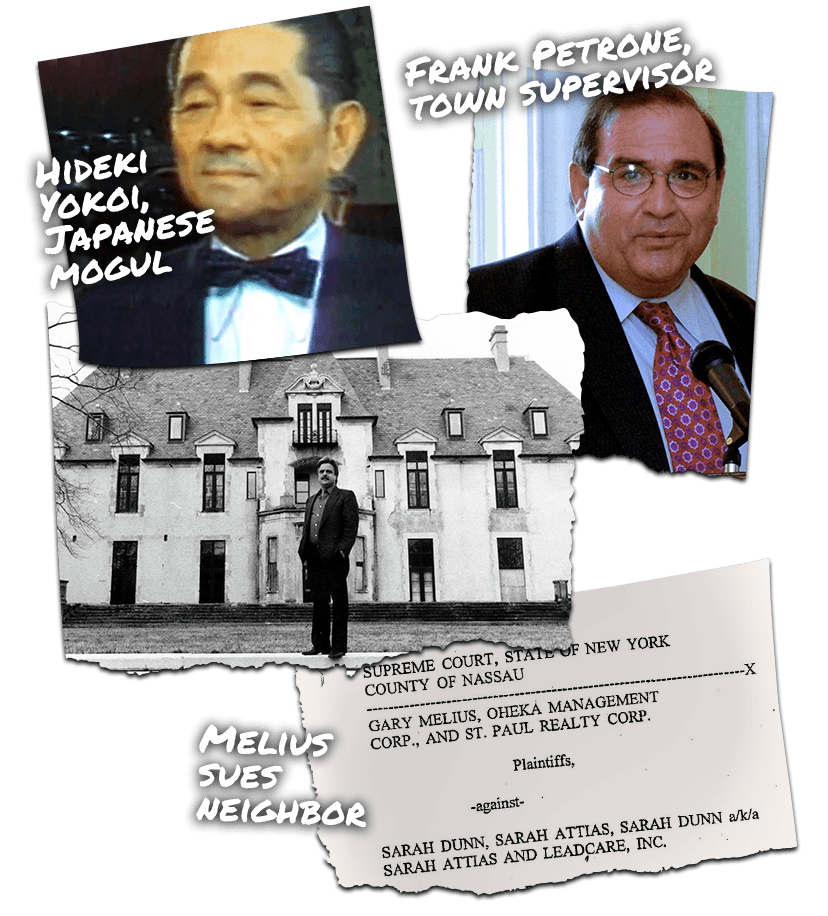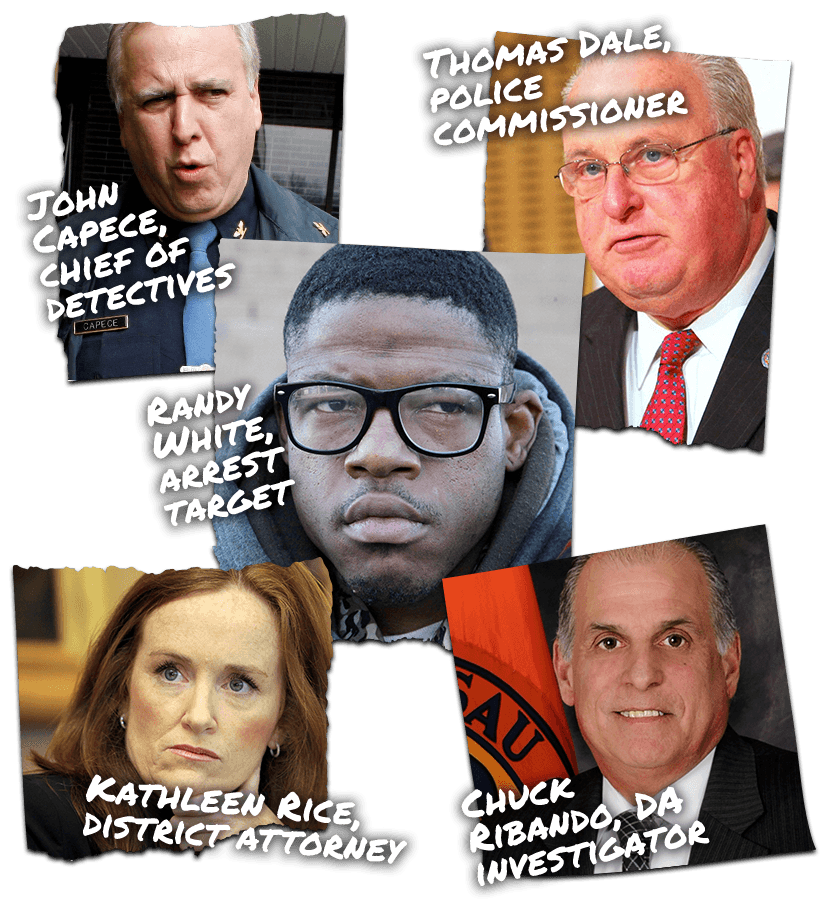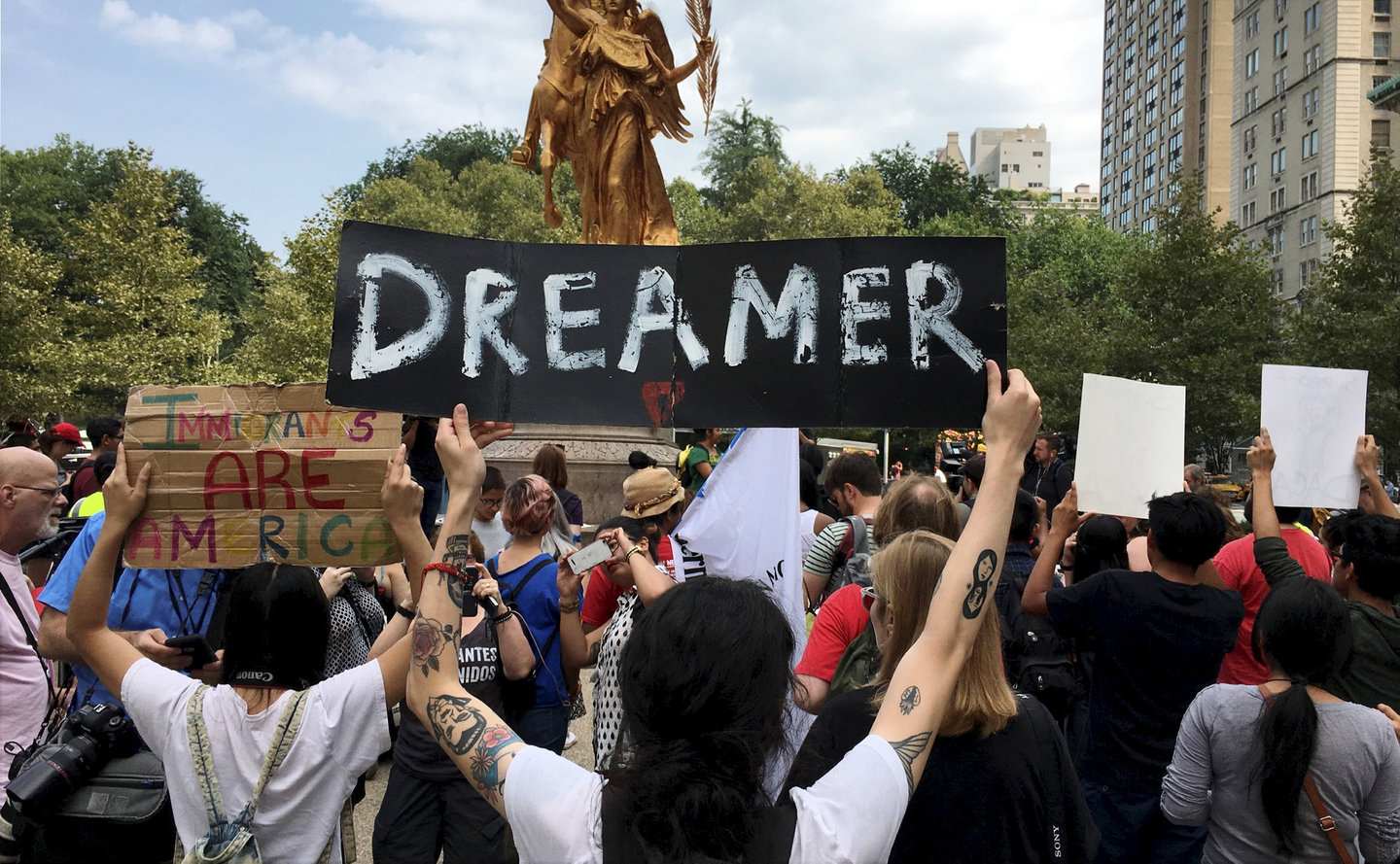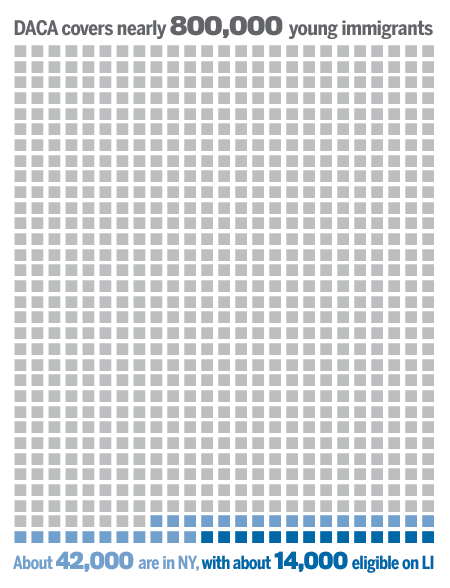When Katie Beers thinks about her childhood, it feels like a lifetime ago.
She has a job in insurance, a husband, two children and a comfortable home in rural Pennsylvania. She said she’s come a long way from her upbringing on Long Island and her famous kidnapping. Jan. 13 marks 25 years since she was rescued from the underground bunker in Bay Shore where a family friend held 9-year-old Beers hostage for 17 days.
Anniversaries can make her emotional, but 2018 also brings a sense of peace.
“It’s a lot different this year than it has been in prior years,” Beers, 35, said. “This is the first big anniversary where both of my abusers are deceased, so I know I don’t have that worry of either of them getting out of prison.”
John Esposito, the man convicted of kidnapping and holding Beers hostage, died in prison in September 2013. He admitted to sexually abusing Beers in a parole hearing days before his death. Sal Inghilleri, another family friend who sexually abused Beers prior to the kidnapping, died in prison in 2009.
Beers said she spent time reflecting on her life after the 20-year anniversary and wrote a book, “Buried Memories.” She does not have contact with her biological mother and brother but maintains a close relationship with her foster parents and siblings in East Hampton.
Now she’s focused on giving her children, ages 6 and 8, a childhood. When the time comes, she will tell them the full story – she said she’s talked generally about the kidnapping but not shared many details.
For now, she said she’s trying to be the best parent she can.
“I’m at the standpoint that they shouldn’t be out of my sight for extended periods of time, but I’m trying hard to not be a helicopter mom,” she said. –LAURA BLASEY
THE SAGA OF KATIE BEERS
BREAKING HER SILENCE
The following article was published Jan. 13, 2013, on the 20th anniversary of Katie Beers’ rescue. It was written by Ann Givens.
The Long Island girl whose tortured childhood culminated 20 years ago in her abduction and imprisonment for 17 days in an underground dungeon is now a married woman with two children of her own.
She has not only survived. She has prevailed. And she is finally breaking her silence.
Beers, 30, said that her horrific imprisonment in the end freed her from a childhood in which she endured neglect and sexual abuse at the hands of the adults who were supposed to protect her.
“Being abducted was probably one of the best things that could have happened to me in my life,” she said in a Newsday interview.
Sitting in the cozy, toy-filled living room of her log cabin overlooking the Pennsylvania countryside, Beers said her nationally publicized rescue on Jan. 13, 1993, opened the door to a new life with a loving foster family in East Hampton, one that allowed her to play “like any other kid,” frolicking in the snow in winter and riding her bike in the spring.
At the end of a long day last week, Beers’ son Logan, 31/2, was happily playing with his favorite fire truck, Fiery Flynn, while her daughter, Halee, 17 months and in pigtails, rode through the house on her mother’s hip. Beers said when the time comes, she will tell her children what she lived through.
But she will also give them the innocence she was denied.
“If my childhood hadn’t been what it was, I wouldn’t be who I am,” Beers said. “I just accept it. If it all hadn’t happened, I wouldn’t be with my [foster] parents, I wouldn’t have my kids. It would be a whole different life.”
This week, Beers, whose oval face and deep chestnut eyes have changed little since the day America watched her get freed from her captor’s underground chamber, will release her memoir, “Buried Memories,” which she wrote with WCBS-TV reporter Carolyn Gusoff.
During the interview, Beers talked about physical and sexual abuse she said she endured beginning when she was a toddler, the terrors of the sleepless 17 days and nights she spent captive in an underground vault in Bay Shore, of the core strength that allowed her eventually to put her fear aside and how she learned to be the best mother she could be to her two children.
Beers said she has wanted to tell her extraordinary story since the day she was rescued from her dungeon, where she was held captive by a family friend named John Esposito, and into a police car in the blinding glare of press photographers’ flashbulbs. But she said she knew she needed to come to terms with her own past first.
“I wanted to graduate high school, I wanted to graduate college. I wanted to get married because I knew it was going to be a journey for me and I wanted to be sure that my roots were set,” she said.
When they were, Beers started allowing the memories back in, writing them down on napkins and scraps of paper so that, once examined, she could begin to release them.
“That was my healing process,” she said. “To be able to remember, but then also to forget, so the memories didn’t weigh so heavily on me.”
Sitting on the beige sofa in her home, Beers today is friendly and open, surrounded by reminders of her family life, including photos of her with her husband, Derek, beaming on their wedding day.
But she does not claim to be without scars.
“I’m very cautious about my surroundings,” Beers said. Indeed, she stands up to look out the window during the interview, thinking that she hears someone coming.
“A woman that works in the office next to me always jokes that I’m always honed in on what people are doing when they walk past her office,” said Beers, who works at an insurance company. “I try to maintain that everybody is a good person, but I still have to prepare for the worst.”
Beers said she believes she has avoided paranoia when it comes to her young children, and she hopes she can preserve that attitude as they get older.
“I don’t think right now that I’m too protective,” she said. “My son is 31/2 years old, so he shouldn’t be outside my field of vision for more than two seconds anyway. But when they’re a little bit older, sleepovers, going to friends’ houses, possibly it could be more difficult.”
When she recounts the terrors of her childhood, it seems as if Beers is speaking about events that happened to someone else. She will answer any question, yet emotionally wrestles with her past.
Beers said that in the first years she lived with her foster family in East Hampton, she was often angry and unapproachable.
She said before her first day at Springs Elementary School, teachers held an assembly warning students not to question her about what she had been through. They did anyway, but Beers said she answered all questions matter-of-factly, if tersely, and in time she became just another kid at the school.
Her foster father cooked her French toast in the mornings and her foster mother taught her for the first time how to brush her teeth. School became mandatory, where throughout her life it had been optional. And chores were assigned to teach her responsibility, not to harass her.
“Now I had to bring the laundry basket downstairs. Not do the family’s laundry,” Beers said.
By high school, she was captain of the volleyball team. She played tennis, she had a steady boyfriend.
Through years of acceptance and safety, she gradually learned to trust her foster parents, who she now refers to as Mom and Dad, her four foster siblings, her friends and, finally, even men. Beers said her foster family did not want to be interviewed for this story.
Beers maintains a limited relationship with her biological mother and her half-brother John, both of whom she’s seen a few times in recent years. For more than four years after she was rescued, Beers said she longed to live with her biological mother. But she said it was better that she had not been returned to her.
“It’s still hard to admit that she neglected me,” Beers said. “I’d still like to say, ‘Well, she was working two jobs to make a living for us.’ But it wasn’t the case. Maybe if she was around more often, the abuse wouldn’t have happened.”
BEFORE THE ABDUCTION
When Katie was 2 months old, her mother, Marilyn Beers, dropped the baby at her friend Linda Inghilleri’s apartment so she could rest, Beers said. The baby-sitting job that was supposed to last a few hours instead continued for much of the next nine years. Later, Marilyn Beers said Inghilleri, who was Katie’s godmother, refused to give her daughter back, while Inghilleri said her friend checked out of her daughter’s life.
“Before I was a parent, I might not have thought of it as that odd about living with my so-called godmother,” Beers said. “But now, if I’ve let my children sleep at their grandparents’ house, of course I’ve always gone to pick them up the next day. I don’t know how or why, or what was going through anybody’s head about it.”
By the time she was 4, little Katie was wandering the neighborhood, alone and underdressed at all hours of the night, doing the Inghilleris’ laundry and running across the busy street to buy them cigarettes and Hostess cupcakes. Beers says by the time she was a toddler, still unable to speak in sentences, she can remember Sal Inghilleri molesting her. As she got older, it happened more often, and she said he would hunt her down even when she tried to hide.
Sal Inghilleri, Linda’s husband, was convicted in 1994 of two counts of sexual abuse for molesting Katie Beers and two counts of endangering the welfare of a child. He died in state prison in 2009. At Sal Inghilleri’s trial, Beers testified about being abused by him, and of the couple’s slave-like treatment of her. She said she did not reveal the depth of her physical and sexual mistreatment until now.
“I wasn’t ready to admit to anybody, especially myself, that it happened,” she said last week.
Marilyn Beers, who lives in West Islip, declined to comment for this story. A lengthy Suffolk Family Court process begun after Katie was freed from Esposito resulted in Katie being turned over to the foster family in East Hampton. A woman who answered the door at a Nassau County address listed to Linda Inghilleri also declined to comment. Neither woman was charged with any crimes related to Katie’s treatment.
One of the peripheral figures in Katie Beers’ life was a neighbor and friend of her mother’s named John Esposito, who called himself “Big John.” The Bay Shore man had offered to be a mentor to Katie’s half-brother, John Beers, who was six years older than she and known as “Little John.”
Esposito kept his garage in Bay Shore stocked with candy and video games, and through the years the site had become a favorite place for neighborhood kids to hang out.
Years after Katie’s rescue, a stray memory from her days spent at Esposito’s home nearly knocked the teenage Katie Beers over, she writes in her book.
“Behind Big John’s house, there was a hole in the ground,” she recounts, recalling that she was about 6 or 7 at the time. “Little John and my cousin Jason were jumping in and climbing out of it. I was too small to join the guys, so I was just standing on the edge of the deep hole, laughing.”
Later, Esposito poured a concrete slab over the hole.
“I suddenly realized that I had watched the construction of the bunker that would later be my prison,” she writes.
THE ABDUCTION
In the months leading up to her 10th birthday, Beers said — in her first published interview — Esposito tried to get her alone.
Just before Beers’ birthday, when she was at the Inghilleris’ home, Esposito visited. He gave Beers a Barbie Dream House for her birthday, and then took her to a video arcade. Afterward, he took Beers back to his home, and had her play a video game while sitting on his bare mattress with the lights off and the curtains drawn, she told Newsday.
“I’m not going to hurt you, Katie,” he whispered.
Beers said Esposito then carried her, screaming, down his stairs.
As Beers watched, nearly hyperventilating with fear, Esposito unscrewed a bookshelf from his office wall, moved it aside, then rolled up the beige carpet underneath.
There Beers saw a slab of concrete with a frame around it. Esposito attached a bar with a hook to the slab and began cranking it open.
He screamed at her to get down into the hole, and threw her down when she refused.
He then followed her into the darkness and through a tunnel that led to a tiny door. Inside, there was a closet-sized room covered in cork and foam insulation. Elevated off the floor was a coffin-like cabinet with a television at one end secured with a padlock.
Esposito ordered Beers to climb into the cabinet, where he fastened a chain around her neck.
“When am I going home?” Beers said she asked.
“This is your new home now,” he answered.
For the next 17 days, Beers lay awake in the box, unwilling to close her eyes for more than a few minutes at a time. She feared that if Esposito found her sleeping he would hurt her, or do as he had threatened and take a photograph of her sleeping to leak to police to convince them that she was dead so they would stop searching for her.
KATIE’S PRISON
During those endless days, Beers watched news accounts of police looking for her, and her mother and half-brother begging for her return. She kissed their faces on the TV screen, she said.
When Esposito descended into the hole, he’d bring her soda and candy. Other food she would refuse for fear that it was poisoned. After Eight mints are a taste that still makes Beers gag with the remembrance of her torture, she said.
In writing the book, Gusoff, who had covered Beers’ disappearance when it happened, was allowed to listen to a chilling relic from Beers’ imprisonment: voice-activated tapes Esposito made of his conversations with her in the dungeon. Beers herself has never heard them, nor does she want to.
The tapes, which were discussed during Esposito’s trial, contain the sounds of Katie sobbing and singing happy birthday to herself. And Esposito can be heard on the tape worrying aloud that he will be caught. He tells Beers that he might kill himself, but promises that he would leave a note on his body telling police where to find her.
KATIE’S RESCUE
Finally one day, Beers heard Esposito coming into the underground chamber. This time, he was not alone. Esposito had been a suspect in the case ever since he reported her missing from the video arcade, and at last he had admitted to his lawyer that he was holding the girl.
As Esposito descended to the dungeon for the last time, he was followed by two men wearing suits. Beers was so broken and scarred by then that her first thought was that Esposito had brought friends who wanted to hurt her, too.
“So I stayed put, frozen,” Beers says in the book.
Reaching out to help her, the men announced they were police.
At Esposito’s 1994 trial, Suffolk prosecutors said Esposito sexually abused Beers repeatedly during her captivity. Beers told officials at a 2007 parole hearing that she had been raped, according to a transcript.
In a plea agreement, Esposito, who declined to be interviewed for this story, pleaded guilty to kidnapping charges and was sentenced to 15 years to life. He remains in jail. At a 2007 parole hearing, he said that he never sexually assaulted Beers.
In last week’s interview and in her book, Beers said that Esposito and Sal Inghilleri had raped her.
Within hours of her rescue, Beers was interviewed intensely by Suffolk police who wanted details of the crime while they were fresh in the child’s mind.
In tapes of those interviews she listened to, Gusoff said in the book that Beers sounded “chipper,” humming to herself amid the questions by detectives.
“You’re pretty smart, you know,” Special Victims Det. Deborah Tyrell told the child, according to the book.
Interviewed by Gusoff years later, now retired Suffolk Chief of Detectives Dominick Varrone, who led the kidnap team in Beers’ disappearance, said that spark gave police faith that, in the long run, Beers would not only survive, but thrive.
“It was an all-consuming case,” Varrone told Newsday last week. “When you have a situation like that, a child out there who needs your help, it takes over your life. It was a very intense time, and we’re lucky it turned out the way that it did. This story has a happy ending.”










